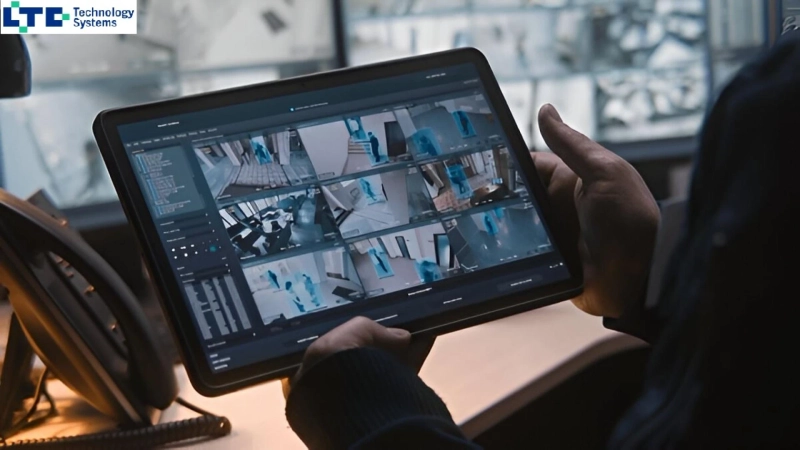Keeping your business safe is one of the most important responsibilities of any owner or manager. A well-designed security camera system not only deters theft and vandalism but also helps protect your employees, assets, and customers. Modern surveillance technology offers clearer video quality, better connectivity, and advanced analytics, but selecting the right system requires thoughtful planning and understanding of your specific security needs.
Identify Your Security Needs
Before exploring brands or features, evaluate what your business actually needs. Each type of business faces different security challenges depending on layout, size, and daily activity. Retail stores often focus on customer monitoring and preventing shoplifting. Offices typically need to secure entry points, parking areas, and data rooms. Warehouses benefit from cameras that cover large areas and function well in low light.
Walk through your property and identify vulnerable spots, such as back entrances, storage rooms, and cash-handling areas. Knowing your priorities ensures that your investment targets the right areas for maximum protection.
Understand Different Camera Types
There are several kinds of security cameras, each designed for specific environments.
Dome Cameras work well indoors, offering a wide viewing range and a low-profile design that blends into the surroundings.
Bullet Cameras are ideal for outdoor surveillance. Their long, narrow shape provides a visible deterrent, and they handle different lighting conditions well.
PTZ Cameras allow you to pan, tilt, and zoom remotely, making them suitable for large spaces where one camera needs to cover multiple angles.
Turret Cameras combine versatility and clarity. They are easy to install and can be used both indoors and outdoors.
Wireless Cameras are simple to set up and do not require complicated wiring. These are best for smaller offices or temporary installations.
Selecting the right combination of camera types gives your business comprehensive coverage inside and out.
Evaluate Image Quality and Resolution
The quality of the recorded video is a key factor in identifying faces, license plates, or specific events. Cameras with higher resolutions, such as 1080p or 4K, produce sharper images. However, higher resolution footage also uses more storage space and bandwidth.
A balanced approach often works best. Use high-definition cameras in critical zones like entryways or cash registers, and standard-definition cameras in less sensitive areas. This approach controls costs while maintaining effective security.
Consider Storage and Recording Options
Every camera system needs a reliable way to record and store footage. The main choices are:
NVR (Network Video Recorder): Works with IP cameras and stores digital video, allowing easy remote viewing.
DVR (Digital Video Recorder): Commonly used with analog cameras and typically costs less than an NVR but offers fewer advanced features.
Cloud Storage: Uploads footage to secure online servers, giving you access from anywhere and protecting data even if physical equipment is damaged.
Cloud storage is becoming more popular because it simplifies management and adds extra layers of protection, although it requires dependable internet service and proper data encryption.
Check Connectivity and Integration Features
Today’s surveillance systems can do much more than record video. Look for systems that connect to your network and allow remote access from a smartphone or computer. Integration with alarm systems, motion detectors, or access control adds convenience and enhances overall safety.
When selecting a system, make sure it works well with your existing IT setup. Poor network compatibility can cause lag or video loss, while proper integration makes it easier to manage your entire security network efficiently.
Review Night Vision and Low-Light Capabilities
Security does not stop when the sun goes down. Cameras with infrared technology or low-light sensors are essential for capturing clear footage at night. Infrared cameras use LED lighting to record black-and-white images in darkness, while advanced low-light cameras produce color images even under minimal lighting.
For outdoor areas like parking lots or loading docks, choose cameras that provide extended night vision range and weather-resistant housings to ensure dependable performance year-round.
Focus on Durability and Reliability
Durability is a major consideration for any security system. Outdoor cameras should be weatherproof and resistant to dust, heat, and rain. Check for an IP rating that indicates how well the camera can handle environmental exposure.
Reliable brands and models usually come with strong warranties and technical support, ensuring long-term peace of mind. A quality system reduces downtime and minimizes maintenance costs over time.
Plan a Realistic Budget
Security systems vary widely in price, but the cheapest option is not always the best choice. Instead of focusing solely on cost, think about long-term value. A dependable system with clear video, reliable storage, and low maintenance often saves money in the long run.
Your budget should include equipment, installation, maintenance, and potential network upgrades. If cost is a concern, start by securing the most vulnerable areas first and expand coverage later.
Ensure Professional Installation and Regular Maintenance
Even the best security camera system can fail to perform if it is installed incorrectly. Professional installers understand proper placement, wiring, and configuration. They can position cameras to eliminate blind spots and ensure reliable performance.
After installation, schedule routine maintenance to check cables, lenses, and system updates. Regular upkeep prevents technical issues and extends the lifespan of your investment.
Follow Privacy and Legal Guidelines
Before setting up cameras, make sure you understand local laws regarding surveillance. Businesses are often required to inform employees and customers when video recording is in use. Cameras should never be placed in private spaces like restrooms or break areas.
Protecting recorded footage is just as important as capturing it. Limit access to authorized personnel and use password protection or encryption to keep data secure. Following privacy standards builds trust with your team and your customers.
Conclusion
Selecting the right security camera system requires careful evaluation of your business’s layout, needs, and future goals. The right equipment combined with professional installation and ongoing maintenance can significantly improve safety, reduce risks, and provide valuable peace of mind.
For professional guidance and installation of a Security Camera System in Ocala, trust the experienced team at LTC Technology Systems. Serving businesses throughout Ocala, they provide dependable, customized security solutions designed to protect what matters most.



